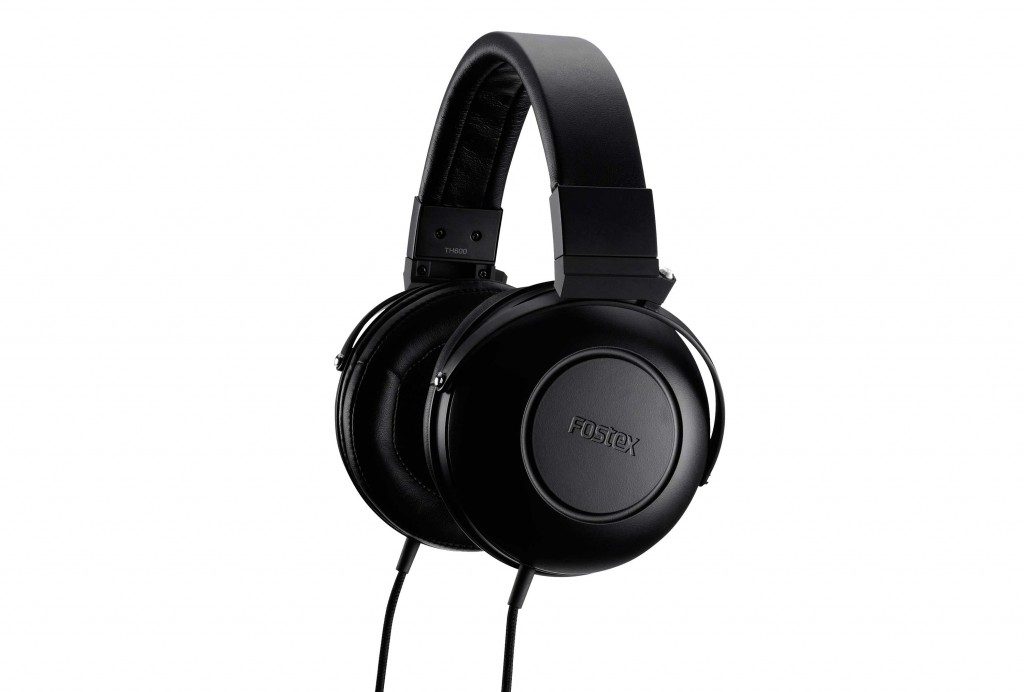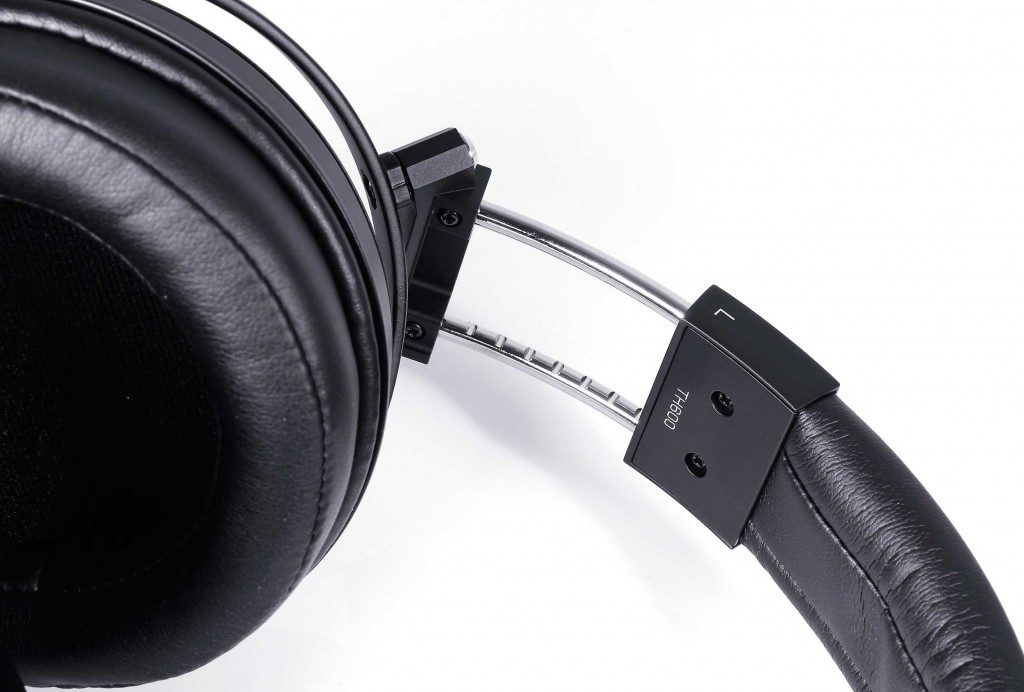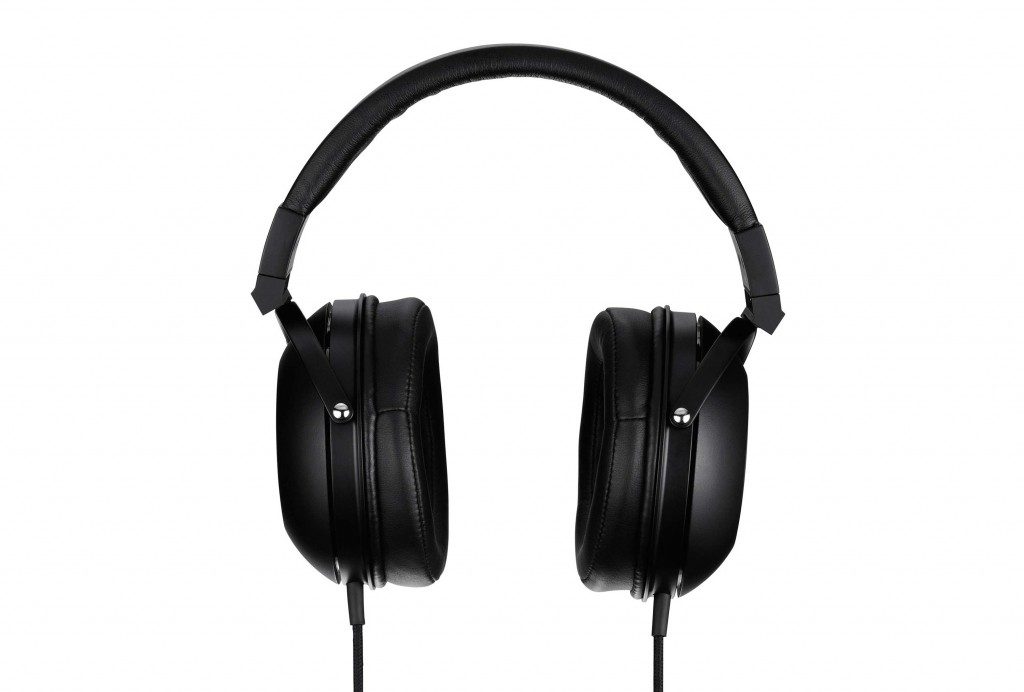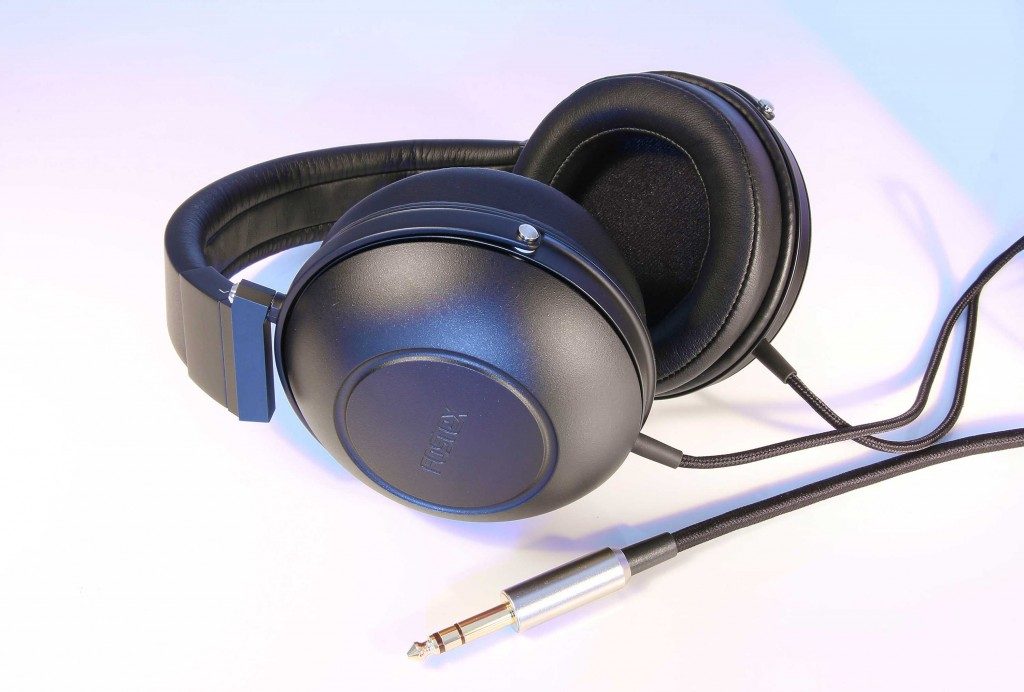Ending a popular partnership as Denon’s OEM for the discontinued Denon AH-D2000, D5000, and D7000, Fostex released their statement piece soon after in their highly praised TH-900. Fast forward a bit ahead, the lower priced, slightly understated TH-600 joined Fostex’s staple of premium headphones.
Does the TH-600 live up to Fostex legacy? It is cheaper, less luxurious (albeit it mostly similar) than the TH-900, with slightly inferior specs. It would be a hard sell for those who have already experienced the TH-900, but at less than half the TH-900’s street price, it would be silly to simply dismiss it without giving it some due consideration.

Personally, I had experienced the Denon AH-D7000 as my first higher end headphone a couple of years ago, and to this day, remains as my subjective reference for what I look for in a headphone. The TH-600 certainly had a lot to live up to for personal reasons, as I have sought the D7000 for years after making the mistake of selling it twice. It remains my absolute favorite, and so I sought out the TH-600 has a direct alternative, despite knowing beforehand some things had been technically improved and expanded upon.
That out of the way, I was beyond excited to revisit Fostex’s house sound.
-Build Quality-
Rating: Good
The TH-600’s build quality, bears a strong resemblance to the Fostex equipped Denons of old, with a few, mostly aesthetic differences.
Nearly all pieces are colored in matte black, giving the TH-600 a stealthy and non-descript look, a stark contrast to it’s significantly more expensive sibling, the TH-900 which wears it’s prestige proudly.
Starting with the headband, the TH-600 uses Idemitsu Grancuir leather made of eggshell protein, which cuts down on weight in comparison to standard leather by 60%. The underbelly of the headband lacks a bit in material, though the headphone sits light on the head. I would’ve preferred a bit more cushion for additional comfort.
The size adjustment mechanism is identical to the old Denons. Two metal bars on each side, each with indentations that allow the cups to slide smoothly into a preferred size, with a firm grip to maintain headband extension.

The piece holding the cups to the headband is (like the old Denons) a bit suspect, as it is just one rounded nut holding the full weight of the yokes and cups. There is little doubt that this piece is likely to be the first area to fail, build-wise. I hope for future iterations and products, Fostex take note, and uses a more secure method hold the cups to the headband.
Using magnesium cups, the TH-600 proves to be a bit less prone to superficial, aesthetic damage, compared to the older, lacquer covered wood of the Denon D5000, D7000, and Fostex TH-900. The exterior is a nice, textured finish devoid of gloss, and is fingerprint resistant, in comparison to gloss covered cups. This is particularly nice, as I personally absolutely hate fingerprint-prone finishes. I would take the TH-600’s cups over the incredibly beautiful, TH-900’s Urushi wood cups any day of the week. While not as luxurious, the magnesium cups offer a peace of mind, while remaining distinctively beautiful.

Moving on to the angled earpads, also made of Idemitsu Grancuir leather, provide a cool, comfortable touch. They build up less heat than standard leather, lambskin, or pseudo-leather, though not on par with the velour-esque pads of other headphones, to my ears. Still, as far as a leather variants go, these are my absolute favorite earpads, and would love more companies to use this material for their headphones if cloth material pads aren’t an option. The earpads have plenty of room for most ears to fit without issue, with excellent depth.
On to the dual entry, non-detachable cables. The cables are fairly substantial, being very long, and on the thick side. The cable is covered in a nice cloth, oozing a premium look, though being a bit more sensitive to tangling on the thinner, dual entry end. On the opposite side is the incredibly robust, thick barrel with terminates into a 6.3mm (1/4″) plug. The barrel’s finish has a nice textured, metal finish, which I found nicer than the smooth finish on the TH-900’s plug. There is no 3.5mm adapter, and wholeheartedly recommend TH-600 owners to invest in a 6.3mm to 3.5mm adapter from either Sennheiser, Grado, or Cardas (not the cheap ones found online that put a strain on 3.5mm inputs).
All in all, despite premium presentation, the TH-600 feels a bit fragile, and is definitely not a headphone you want to abuse or throw around. As with most luxury items, you will want to baby the TH-600.

-Accessories-
Carrying Pouch – made of the same material as the ear pads and headband, the pouch looks and feels nice, but won’t offer much protection outside of scratches/scuffs.
-Comfort-
The TH-600 is what I consider average in weight, being neither too light nor heavy. The headband does sit fairly light on the head.
One noticeable improvement over the older Denon line is an additional amount of clamp, which keeps the TH-600 a lot more secure on the head. I feel this to be an absolute necessity for long term comfort, rather than keeping clamp minimal to the point where it’s sliding all over the place. The clamp is unobtrusive, and does not approach anything remotely close to uncomfortable.
The cups are very large, don’t fold flat, and have a long, hefty cable which keeps it from sitting comfortably around the neck when not in use.
The ear pads are nice, comfortable, and cool in comparison to the older Denon line, though after prolonged periods, will still build up heat and sweat, which is my biggest complaint on comfort with most headphones outside of weight and level of clamp.
As long as the TH-600 remains cool, it is very good in almost all aspects of comfort.
Rating: Very Good
-Isolation/Leakage-
The TH-600 is not very impressive in terms of noise isolation and leakage. Isolation is particular disappointing, as it does not block out external noise all too well. That being said, as a ‘closed-back’ headphone, the TH-600 still performs considerably better than open-backed headphones.
It’s sound leakage fares a bit better, though far from a true closed-back headphone. This means that it will keep your audio from disturbing people in other rooms, though will remain faintly audible in the general vicinity. I don’t particularly need a headphone that isolates well, but I do expect some form of noise leak control. The TH-600 performs well enough for a late night headphone. At moderately high volume levels, I do not recommend it if you have a significant other sleeping in the general vicinity (i.e on the same bed). At moderate to low volumes, I feel it’s a generally safe choice.
Rating: Fair (Mediocre for a closed-back, though still more capable than open-backed headphones)
-Sound-
I expected the TH-600 to have a familiar sound to the D7000, though with some refinement in most aspects. The TH-600 certainly lives up to these expectations. Fortunately, the transition was not as vast as I initially feared. I would’ve been absolutely thrilled had the TH-600 been simply a rebadged D7000. While similar in some aspects, it clearly isn’t the case, as the TH-600 is objectively a better headphone.
The TH-600 shares a very familiar, bass first, V-shaped curve as it’s former Denon siblings. Strong bass, with a midrange sitting below the sparkly, clean, energetic treble.
-Bass-
Prior to receiving the TH-600, I knew the bass would be the main target of my strong scrutiny. It’s not because I feared the bass would be lacking in quality or refinement, but because I had a subjective preference for the D7000’s jaw dropping rendition of bass, and desperately hoped the TH-600 would’ve attained some of that liveliness and musicality.
Did the TH-600 pass my tests? Both yes and no. Yes, because it does have some things in common with the D7000, and noticeably improves on it’s speed, texturing, and decay…objectively. No, because I’m a person with a real deep seeded love for that lovable D7000 rumble, decay, omnipresence, and particular resonance. In becoming more refined, some of that classic D7000 fun was reduced. This was a big reason why I didn’t believe in modding the D7000.
Don’t take this the wrong way. The TH-600 certainly hits with a very satisfying amount of low end thunder and impact. There is a typical audiophile saying for headphones with well balanced bass, though not particularly energetic: “If the music calls for it, headphone X will reproduce bass notes well.” Well, with the TH-600, not only does it hit the bass notes well, it does it with an immense authority. It’s like a basshead headphone, without being a basshead headphone. It’s hard to describe until you’ve heard it for yourself. The TH-600’s low end can be monstrous, though not the kind of boominess and bloat associated with basshead headphones. Some people who come from bass heavy headphones may even find the TH-600 reserved due to how controlled it is.
Rest assured, if you have plenty of bass heavy music, the TH-600 will rattle your head with amazing rumble. Just not exactly like the D7000 would. Let me be clear, the TH-600 is a better headphone than the D7000, including it’s bass. Personally, I don’t think it can be disputed. The TH-600 is objectively cleaner, clearer, and more controlled. Personal preference may tip the scales towards to the D7000, but that is all the D7000 may best the TH-600 in: personal preference for it’s tonality, not technicality.
The TH-600 reaches as low as I can perceivably hear in the 20hz range (I can also hear driver movement under 20hz), with some notable rumble and presence between 40hz-50hz. The low end is well present throughout, without bloat or long decay. The TH-600’s low end speed is relatively agile, particularly for a headphone with bass this meaty. The decay is medium-fast (though not open-backed level speed). The TH-600 offers a tactile, full bass presence, without treading on overly warm and overbearing. If it’s emphasized over the mids, it’s mostly due to sheer emphasis in comparison. It does not approach boomy, slow, or bloated. The TH-600 presents sub, mid, and upper bass sections on a generally even scale.
In short, the TH600’s bass is on the level that I’d consider fantastic in every regard. It’s emphasized, yet controlled to the point of making seem lighter in coloration than it is. The only closed-back headphone that bests it in refinement that I’ve personally heard is the TH-900, which is even faster on it’s feet despite being just as heavy on the low end.
To sum up the bass, while it’s not as ‘fun’ as the D7000, it is still among the very best both subjectively and objectively, in my book. If bass on the D7000 was a 10 in fun and 8.25 in technicality, the TH-600 is a 8.75 in fun, and 8.75 in technicality.
Quality: Fantastic Quantity: Strong, yet well controlled
-Midrange-
The TH-600, as expected, takes a back seat in the midrange department, so anyone into rich, upfront vocals will need to look elsewhere. Vocal and instruments are slightly pushed back on the TH-600 (which on the bright side, improves the sense of space). The midrange, while on the distant side, is relatively well defined. Vocals and instrument weight is on the thinner, dry side, with sharper definition, compared to a warm, lush midrange which may sound more organic, but not as well defined.
As far as problematic areas in the frequency response, the TH-600 has a glaring peak at 5khz. It is easily the loudest range of the TH- 600’s sound (a contrast to it’s generally pushed back midrange), and can become fatiguing with sources that continuously thrive in that range, like some female harmonics. Thankfully, I didn’t notice it much with normal use, whether I used it for music, movies, or any other forms of media. Only in frequency tests did it truly stick out, though your mileage may vary.
The transition to lower treble has a very narrow, but distinct dip at 7.5khz.
The midrange is the TH-600’s weakest aspect of it’s sound, and may turn off the vocally inclined. As such, I recommend a headphone with better linearity, and less bass emphasis. For those looking into a more dynamic sound, the midrange will still be good, though outclassed by the TH-900 in maintaining a good presence, and cleanliness, next to the potent bass.
The TH-600 is well suited for ambient, atmospheric music, as well as rhythm heavy music like most general EDM genres.
Note that the midrange despite being recessed, is still very good, and can potentially become even better with warmer gear to offset it’s dry and recessed nature. A warm tube amp could transform the TH600 into a noticeably better headphone. Inherently, the midrange sits at point where source and amp can noticeably impact it’s performance.
Quality: Very Good, fatiguing 5khz peak. Quantity: Recessed, with a strong peak at 5khz
-Treble-
The TH-600’s treble range is effortless, airy, crisp, clear, and well extended. It peaks at 10khz and appreciably extends past that to 14khz before rolling off. Subjectively, I find the treble just moderately over the neutral point, nothing problematic.
The TH-600 has one of the cleanest treble ranges I’ve heard, with no induced fatigue, despite it’s general brightness up top. This makes the TH-600 one of the absolute best headphones I’ve used for lower to moderate listening with no sense of dullness or veil, regardless of volume. In fact, I’d say the TH-600 is technically at it’s best at moderate volumes, due to even better bass control and crisp, clean treble.
The treble aids the airy nature of the TH-600’s soundstage, which can at times sound like an open headphone.
Unless you are absolute against energetic treble, you will find the TH-600’s treble range to be absolutely fantastic. As someone who has become accustomed to smooth, fatigue free headphones with some minor treble roll off, the TH-600 was a literal breath of fresh air which reminded me why I was a partial treblehead in my earlier days of audiophilia.
Quality: Amazing Quantity: Sparkly, energetic, extended
-Soundstage-
True to it’s Denon-branded ancestry, the TH-600’s soundstage is uncharacteristically large and spacious despite it’s closed-back design. Like the D7000’s I owned twice before, the soundstage is quite wide, as well as deep. While the TH-900 may have an even larger soundstage, I found the TH-600’s virtual surround soundstage for gaming use to sound a hint easier at locating rear audio cues. The TH-600 convinced me of it’s openness with a deep soundstage, which is rare in a market dominated by headphones with egg-shaped/oval soundstage with great width, with a lack of depth.
Rating: Excellent
-Clarity-
You may initially believe the bold, potent presence in it’s bass, and a generally/slightly laid midrange would hamper the TH-600’s clarity. That may be a typical outcome of many headphones, but the TH-600 isn’t any typical headphone. The bass is very well controlled, slightly snappy, and articulate.
The midrange while recessed next to the low end, is detailed, and well defined. The treble is all strengths (unless you’re adverse to anything remotely energetic), further helping the TH-600’s general sense of clarity. The TH-600 is one of the clearest headphones I’ve heard, despite it’s colored tonality.
Rating: Great
-Sound Signature-
Bass first, treble second, midrange third. Tonality: Mostly between neutral and bright, with some warmth on the low end. Bass presence: strong, not thick, murky, or bloated. The midrange: dry, under the neutral point, but detailed. The treble: crisp, clean, clear, not overly sharp or zingy. Soundstage: Large, airy, wide and deep, circular.
The TH-600’s sound signature as a whole is bassy, a hint bright, and crisp. The bass has some definite warmth, but not the typical, heavy bass warmth associated with most bass heavy headphones. Just slight warmth that helps offset some of it’s dry, and slightly bright sections. The expansiveness of it’s soundstage is truly impressive for a closed headphone.
-Amping-
Recommended.
While the TH-600 isn’t a particularly difficult headphone to drive, it’s slightly dry, slightly bright, but not far from neutral voicing, makes it susceptible to source/gear colorations. Warm sources can aid it’s tonality and musicality. Neutral/cold/bright gear can make the TH-600 a technical headphone with some power in the low end, though it wouldn’t help the 5khz peakiness.
I wholeheartedly recommend warm/smooth gear to offset it’s weaknesses in the midrange. A rich, lush-sounding tube amp could be a potential endgame setup with the TH-600. Component matching with the TH-600 should provide some amazing results. Just note that it may also push the low end to a more prolific presence.
-Gaming-
The TH-600 can be summed up with one word in terms of it’s gaming performance: Fantastic.
The TH-600 is an all rounder for gaming, with excellent immersive qualities for action, good clarity for games that demand subtle nuances in sound be heard, like competitive gaming. It does gaming well in all regards. The TH-600 has massive impact and rumble for explosions, which I feel makes it a better contender in the fun category of gaming, than competitive. Not many headphones will achieve will do all forms of gaming as well as the TH-900.
Rating: Fantastic
-Personal Recommendation-
Music? Yes, works well for non-bassy music, and highlights bass heavy genres Movies? Yes, plenty of dynamics for Action Gaming? Both casual/fun and competitive General media? Yes, particularly well suited for moderate level listening
The TH-600 works incredibly well for all manner of things thrown at it. It may not have the strongest midrange-section, but it remains adept in that regard.
-Comparisons-
I mainly focused entirely on the TH-600 during my time with it, so I didn’t do extensive comparisons, though I did compare it most with the TH-900, for obvious reasons. I won’t be super elaborate with the comparison, as there are plenty of TH-600 vs. TH-900 comparisons online, though I was able to get a feel for their differences.
I’m not struck with expectation bias here, as I initially felt they were very close to identical during my very first few minutes comparing both. I would’ve personally went the cheaper option, as they were so similar, and I could’ve used some extra cash in my pockets. However, as I dove in to the comparison, I began noticing the differences, which became more apparent as time passed.
First thing to note: The TH-600 and TH-900 are very similar. It’s with time that you’ll notice the subtle and significant differences.
In direct comparison, the TH-600’s bass has a longer decay. The TH-900’s bass yields better speed and decay, allowing vocals to shine as if the two were separate from one another. The bass on the TH-900 simply does not intrude on the midrange despite it’s commanding presence and emphasis. It really is one of a kind in that regard, where the TH-600, while fantastic on it’s own right, doesn’t quite achieve that level of expertise and refinement. This is one aspect where the TH-600 has somewhat typically v-shaped headphone shortcomings, while the TH-900 manages to let vocals shine through despite it’s omnipresent bass.
The bassline is strong and absolute on both, yet the TH-600’s bass ever so slightly detracts from the vocals. The vocals have a slight lack of clarity compared to the TH-900 which manages to sound both sharper and more realistic. The TH-900 allows the bass and midrange to work harmoniously together, considerably so compared to the TH-600.
Both headphones have a wonderful treble section to my ears, with the TH-600 being a hair brighter, and the TH-900 being slightly smoother, and warmer in general. Both are still on the bright side, however, so don’t expect a forgiving treble section on the TH-900. Relative to the TH-600, yes, it is just a very slight hint less pronounced, though still very, very similar in this regard. In both cases, the treble is fantastic, and with plenty of detail to spare. Subtle treble nuances are picked up on both the TH-600 and TH-900 wthout any issue.
The soundstaging on both is beyond excellent. Despite a more euphonic warmth in the general sound structuring on the TH-900, it still manages to throw out a larger soundstage than the TH-600. I was never disappointed with the TH-600’s soundstage, yet the TH-900 makes it appear lacking in direct comparison, which I frankly couldn’t believe. The TH-900’s stereo imaging has greater reach and precision, whereas the TH-600 sounds a bit flat next to the TH-900. Again, the TH-900 makes the TH-600 seem inferior, though it is mainly side by side comparisons that the TH-600 seems lacking.
The sound characteristics between them is as if the TH-600 lost a little of the TH-900’s engaging dynamics over time. As if the TH-600 was an older, tired, worn version of the TH-900. Both are still highly musical, but the TH-900 takes it an extra step further in sheer euphony.
The TH-600 is still absolutely fantastic, though when put next to the higher end TH-900 that you start seeing where it can be improved (which is exactly what the TH-900 does). The upgrade to the TH-900 is notable, and closer to achieving a perfected version of what the TH-600 is attempting to do.
-Final Impressions-
If you enjoy headphones with a robust low end, bell-like clarity up top, with an expansive soundstage, and musicality for days, the TH-600 will serve you incredibly well. The TH-600 brings a powerful, immediate, authoritative sound, with a mature, commanding presence.
Sound Rating: Fantastic
-Likes, Dislikes, and Unfiltered Thoughts-
Pros:
Aesthetics Bass Treble Soundstage Performance overall
Cons:
Not as detailed in the midrange, pushed back in the aural space. Isolation/Leakage is not quite closed-back level.
Unfiltered Thoughts:
While the TH-600 may not be my personal D7000 killer, I do admit it is the superior headphone overall. Street prices can dip near the $500 range, which I feel is entirely justifiable for the level of performance the TH-600 brings.
Is it worth spending more than double the price and just going straight to the TH-900? Having experienced both, it’s a bit hard to justify spending so much for the TH-900 when the TH-600 does so well, so I would have to say, no…initially. I recommend people go for the TH-600 first. If you absolutely love it’s sound and can a afford a perfected version of it, then it may be worth investing in the TH-900. The TH-900 is undoubtedly better in the end, but nowhere near approaching 2x better.
For those with a limited budget that stretches up to the TH-600 price range, don’t feel bad about not being able to own the TH-900. The TH-600 is a fantastic, lower cost alternative, one that most who yearn for it’s type of sound signtaure will happily live with. I was plenty impressed by it, even with the TH-900 just arm’s length away.















Want to join discussion?
Feel free to contribute!